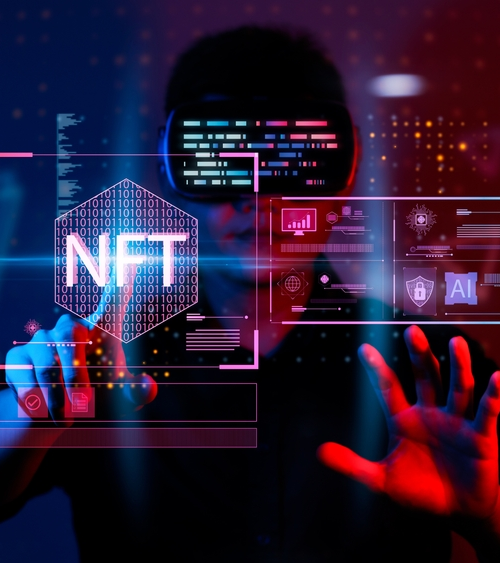Troy Warren for CNT #NFT
Every couple of weeks, the crypto community apes in on a new trend in NFTs. Right now, fractionalized NFTs (FNFTs) are all the rage.
What are fractionalized NFTs?
Fractionalization means splitting the ownership of an NFT into smaller fractions. This makes it possible for several people to collectively own a single NFT. The most high-profile NFTs in the market usually sell for millions, so fractionalization is a way to make ownership of these NFTs more accessible to the masses.

One famous NFT that has been fractionalized is the Doge meme, one of the internet’s most iconic memes and the inspiration behind the DOGE cryptocurrency. The Doge meme NFT was bought by the PleasrDAO collective for $4 million in June this year, then fractionalized into billions of parts, allowing people to own a piece of it for as little as a dollar.

How can you split an NFT?
With fractionalization, only the ownership of the NFT is split, not the NFT itself. FNFTs work the same way that split ownership of a house works – two people can own a house without the house itself being physically split in half.
Because NFTs are made to be indivisible, fractionalization is only possible by linking a number of ERC-20 fungible tokens to a single NFT. As a reminder, ERC-20 tokens are fungible Ethereum tokens, which means they can be exchanged for another of their kind without losing value. The ETH cryptocurrency is an ERC-20 token.
To create a fractionalized NFT, a smart contract is deployed to generate ERC-20 tokens that are linked to the NFT. People can then buy these ERC-20 tokens to own a percentage of the NFT. In the case of the Doge meme NFT, fractional ownership is available through the purchase of an ERC-20 token under the ticker name DOG.
The image below shows the $DOG token on sushiswap.

Why fractionalize NFTs?
Fractionalization democratizes ownership of NFTs. It allows people to participate in the NFT market without having to fork out a fortune, thus opening the market up to a wider pool of smaller investors. Market activity also wouldn’t slow down as an NFT’s price increases because the high price is no longer a barrier to participation.
In this way, fractionalization increases the liquidity of NFTs. NFTs are not a particularly liquid asset because of their non-fungibility. The fungible tokens that represent FNFT, however, can be easily traded on exchanges, and enabling the participation of smaller investors means increased liquidity.
Fractionalization also facilitates the price discovery of NFTs. As the ERC-20 tokens of an FNFT are traded on the open market, the price estimate for the ERC-20 tokens can be used to evaluate the NFT asset’s price. This can also be done through NFT’s buyout option, which allows holders to specify the price at which they are willing to un-fractionalize the NFT.
More efficient price discovery and increased liquidity means that FNFTs provide a way for NFT creators to more effectively monetize their work. Fractionalization also has promising implications for the tokenization of other asset classes such as real estate, as it means a wider range of strategic investment opportunities.
Where can I buy fractionalized NFTs?
The Doge meme NFT was fractionalized via fractional.art, a platform that allows users to buy, sell, and mint fractions of NFTs. Other high profile NFTs fractionalized through the platform include Cryptopunks, Bored Apes, Art Blocks, and EtherRocks. Similarly, Niftex is a platform for trading fractionalized NFTs. On both platforms, buyers can choose to buy either a fraction of the NFT, or offer a buyout price for the entire NFT.

The image above shows a listing for an Art Blocks NFT on Fractional.art. The NFT has been split into 10,000 fungible ERC-20 tokens called FDNZA. 16.48% of the tokens are available for sale, and the NFT is valued at $170,758, based on the combined market value of all the FDNZA tokens. The tab at the bottom allows buyers to switch between fraction purchases and NFT buyouts.
For more information on how to use Fractional.art to fractionalize NFTs, read this guide by Bankless.
What are the drawbacks?
There are a number of potential drawbacks with FNFTs like IP issues, contract issues, rights of publicity and other concerns. Financial regulators may also deem FNFTs as securities, which could lead to legal issues around trading.
Despite the short amount of time that NFTs have been around, we are already seeing many innovative applications and investment strategies emerge in the market. Fractional NFTs have allowed more people to gain access to high-profile NFT investments, and the exposure they bring to this new asset class will help accelerate adoption of NFTs.


































